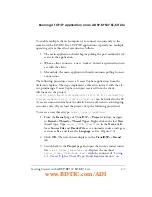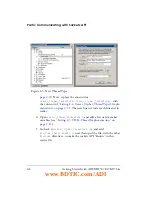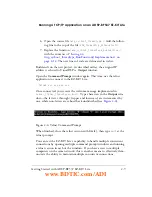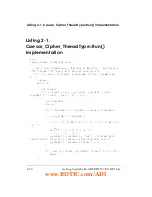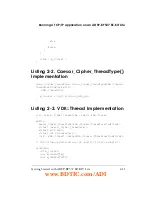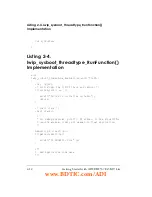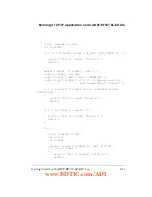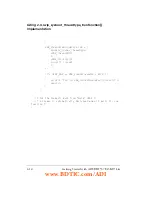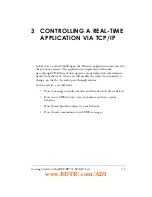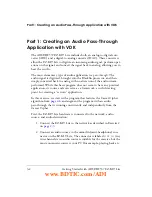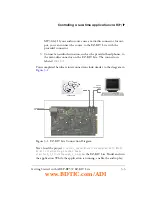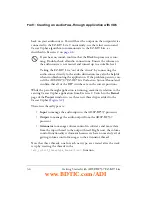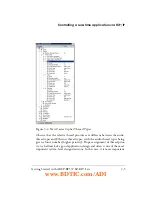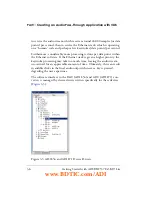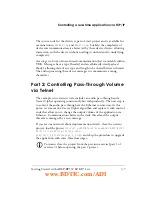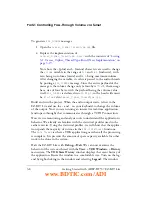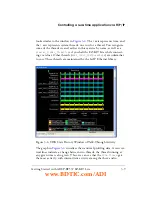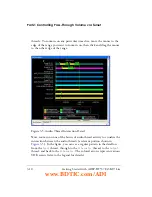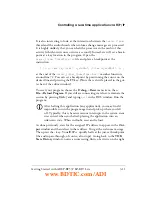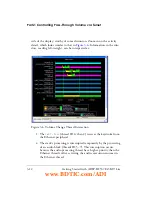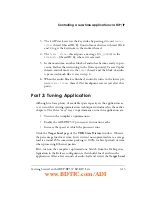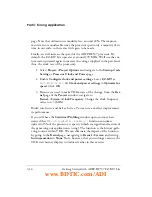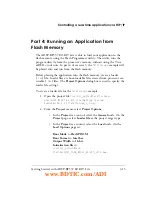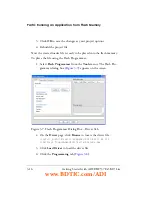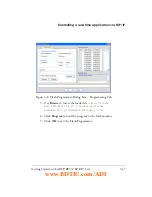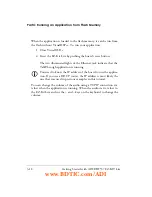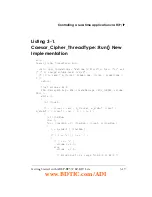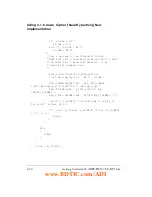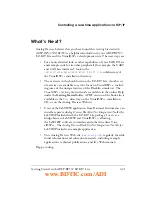
Getting Started with ADSP-BF537 EZ-KIT Lite
3-7
Controlling a real-time application via TCP/IP
The source code for the drivers is part of your project and is available for
examination in
AD1854.cpp
and
AD1871.cpp
. Luckily, the complexity of
device intercommunication is abstracted by these device drivers, allowing
interaction with the device without needing to understand its underlying
complexity.
A
message
is a form of inter-thread communication that is available within
VDK. Messages have a type (header) and an arbitrarily-sized
payload
(body), allowing data of any type and length to be shared between threads.
The audio-processing threads use messages to communicate among
themselves.
Part 2: Controlling Pass-Through Volume
via Telnet
The example in its current state includes an audio pass-through and a
Caesar Cipher operating concurrently but independently. The next step is
to control the audio pass-through via the Ethernet connection. At this
point, we remove the Caesar Cipher algorithm and replace it with control
code that allow you to change the output volume of the application via
Ethernet. Communications between the stack thread and the output
thread are managed by a new message.
If you are unconcerned about implementation details, close the current
project, load the project
<
install_path
>\Blackfin\Examples\ADSP-BF537
EZ-Kit Lite\Getting Started Exam-
ples\Part_3_2\TalkThrough_3_2.dpj
, and skip the procedure to upgrade
the application with inter-thread messages.
L
You must close the project from the previous exercise (part 1 of
exercise 3) before opening the part 2 project.
www.BDTIC.com/ADI

